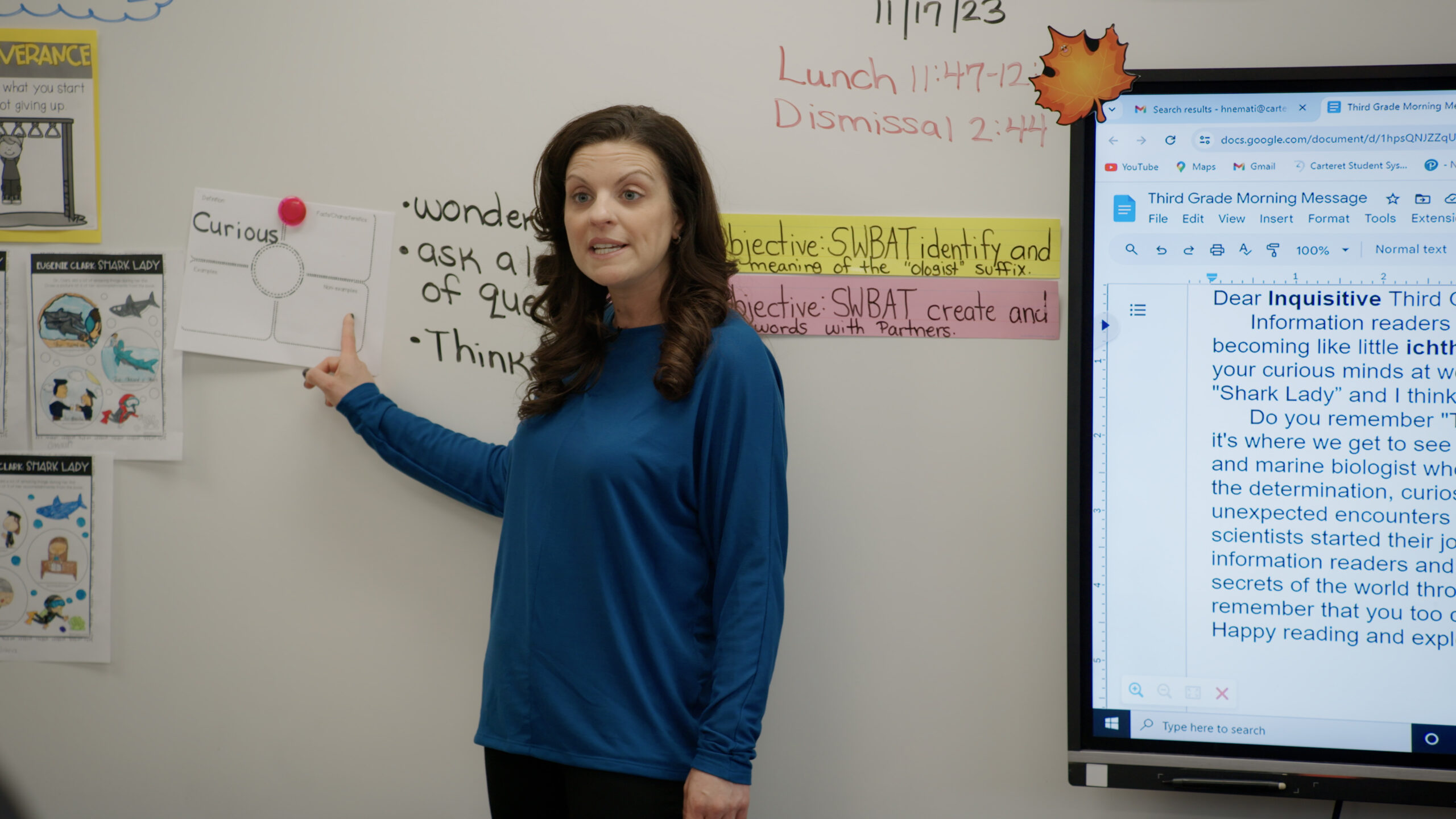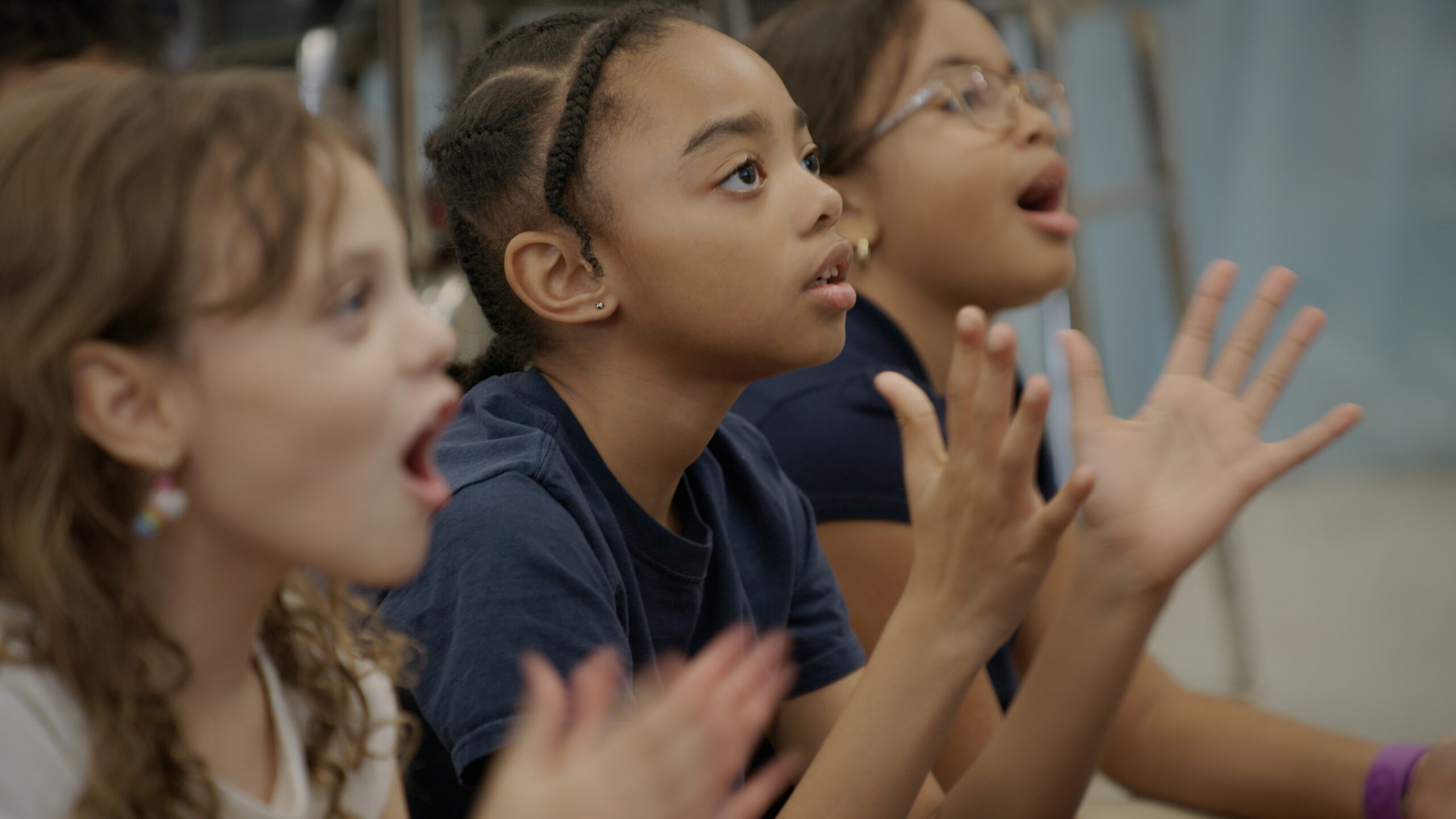Previewing vocabulary words with student-friendly Definitions
Overview
The teacher provides brief, student-friendly definitions of pre-determined vocabulary words before a digital read-aloud of a text connected to their current thematic unit. Students are prompted to pronounce each word and practice a variety of activities such as talking to partners and acting out the meaning of the words.
Key Take-aways
- Typically identified tier two words are introduced during the first read of interactive read-aloud by pausing to provide brief, student-friendly definitions to support student understanding without breaking the engagement.
- Discussing tier two words in depth with a variety of activities can be done after they are introduced during the first read of a text or before students are reading independently or in this case before a digital read-aloud.
Transcript
Dr. Ken Kunz: Watch a students gather on the carpet in explicit and systematic discussions around a key vocabulary word from a familiar read-aloud.
Teacher: We just read about Eugenie Clark traveling and studying fish. And some of the fish were poisonous. Can you say poisonous?
Student(s): Poisonous.
Teacher: Can you clap out the syllables for poisonous?
Student(s): Poi/son/ous
Teacher: Okay. Three syllables, right?
Teacher: What is the first sound that you hear in poisonous? Gino?
Student(s): P
Teacher: What sound does P mean?
Student(s): /p/
Teacher: Very nice. Okay.
Teacher: You also notice that the word poisonous, have you ever heard this word before? Okay. There are some animals that are poisonous. There are some trees and flowers that are poisonous, right? I actually printed out two pictures. Okay? I have a poison dart frog. Okay? And I have poison ivy. So if you’re walking in the woods, or I even have poison ivy in my backyard, if you rub up against poison ivy, it’s poisonous, so it gives you an itchy rash. Okay? A poison dart frog looks so cute, right? But it’s actually poisonous. I’m going to give you some examples of things that are poisonous or not poisonous. So I, when I say the word, I want you to say poisonous or not poisonous. Okay? What do you think of? Water?
Student(s): Not poisonous.
Teacher: Not poisonous, right? Oxygen.
Student(s): Not poisonous.
Teacher: What about salt?
Student(s): Not Poisonous.
Teacher: Right. What about bug spray?
Student(s): Oh yeah, Poisonous.
Teacher: Poisonous. What about sunlight?
Student(s): Not poison.
Teacher: What about hugs?
Student(s): Not poisonous.
Teacher: And what about bleach?
Student(s): Poisonous
Teacher: Yes. Poisonous. Okay. Okay, excellent. So I want us to look at this word one more time. Okay. Poisonous means toxic. Can everybody say that word?
Student(s): Toxic
Teacher: It means it’s not healthy for us. Okay. So anytime you see anything poisonous, it means it’s toxic. I would like you to turn and talk to your partner about something that you know that is poisonous. Go ahead.
Student(s): Something that poison. A Puffer Fish
Teacher: Okay. Who would like to share something they talk to with their partner that they know that is poisonous? Christian?
Student(s): Black widow.
Teacher: A spider. Some spiders. Are you right? Emmanuelle?
Student(s): A vampire bat?
Teacher: Okay. Bella?
Student(s): Animals with bright colors because then when there’s predators and they wanna eat that them, they’re like, oops, no, they’re poisonous. That person that I want eat. No, they’re poisonous. No.
Teacher: They’re bright. They give that off, right?
Student(s): Yes.


